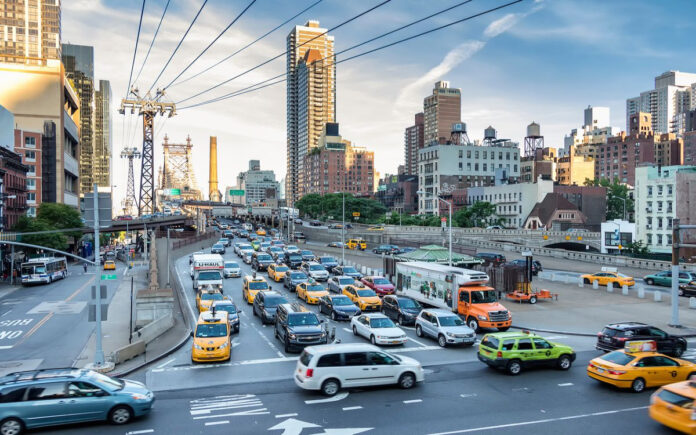New York: The Trump administration announced on Wednesday that it is rescinding federal approval for New York City’s congestion pricing program, a policy designed to reduce traffic congestion while generating funds for improvements to the city’s aging subway and bus systems.
U.S. Transportation Secretary Sean Duffy justified the decision, stating that the program unfairly burdens drivers by leaving them without a toll-free highway alternative. “Instead, it takes more money from working people to pay for a transit system and not highways,” Duffy said.
The congestion pricing program, which took effect on January 5, imposes a $9 fee on most passenger vehicles entering Manhattan south of 60th Street during peak hours, while trucks and buses face charges of up to $21.60. The fee is reduced by 75% during nighttime hours.
New York Governor Kathy Hochul slammed the Trump administration for rescinding approval of New York City's congestion pricing program designed to reduce traffic and raise funds for public transit improvements https://t.co/JeB9XqSzps pic.twitter.com/tLHuhy9woQ
— Reuters (@Reuters) February 20, 2025
Legal Challenge and Political Backlash
The Metropolitan Transportation Authority (MTA) and a New York bridge authority swiftly filed a lawsuit in Manhattan, arguing that the administration’s move was politically motivated—intended to fulfill a campaign promise by Republican President Donald Trump.
Trump celebrated the decision on social media, posting, “LONG LIVE THE KING!” alongside a mock photo of himself wearing a crown, which was also shared by the White House.
New York Governor Kathy Hochul, a strong supporter of the congestion pricing plan, condemned the federal decision. She emphasized that the program has been instrumental in improving public transportation and reducing commute times, particularly for children relying on school buses.
“This is an attack on our sovereign identity, our independence from Washington. We are not subservient to a king or anyone else out of Washington,” Hochul said during a press conference at a New York train station.
“The commuters of our city and our region are now the roadkill on Donald Trump’s revenge tour against New York,” she added.
Impact and Success of Congestion Pricing
Originally approved in the final months of former President Joe Biden’s administration, the congestion pricing program was expected to generate approximately $500 million in its first year. As it involves tolls on federal highways, it required U.S. government approval.
MTA officials have reported measurable benefits since the toll was introduced. Travel times on all Hudson River and East River crossings have improved by 10-30% or more, while bus services have also become more efficient. Subway ridership has increased, and the city has seen a reduction in traffic accidents.
“Speeds are up, up, up. The streets are safer, half as many crashes, and that means pedestrians are not getting injured and killed,” said MTA CEO Janno Lieber.
Also Read | $99M Pulled from Libra Token Amid Milei Crypto Controversy
U.S. Representative Jerrold Nadler, a New York Democrat, criticized the administration’s move, calling it “nearly without precedent.”
“Its approval cannot be arbitrarily revoked, especially when it is clearly delivering tangible benefits,” Nadler said.
Divided Opinions
New Jersey Governor Phil Murphy, a Democrat who has been a vocal opponent of the congestion pricing plan, welcomed Trump’s intervention. He argued that the program disproportionately benefits the MTA while placing an undue financial burden on New Jersey commuters.
Under the system, tolls are collected using electronic license plate readers, with private vehicles charged once per day, regardless of how many times they enter the congestion zone.
Also Read | Fortescue Misses Profit Estimates, Shares Decline
Congestion pricing is not unique to New York. Other cities, including London, Singapore, and Stockholm, have implemented similar programs. London, which introduced congestion pricing in 2003, currently charges £15 ($18.70) per day.
Before New York’s congestion pricing was enacted, more than 700,000 vehicles entered the Manhattan central business district daily, contributing to an average speed of just 7 mph (11 kph)—23% slower than in 2010.



